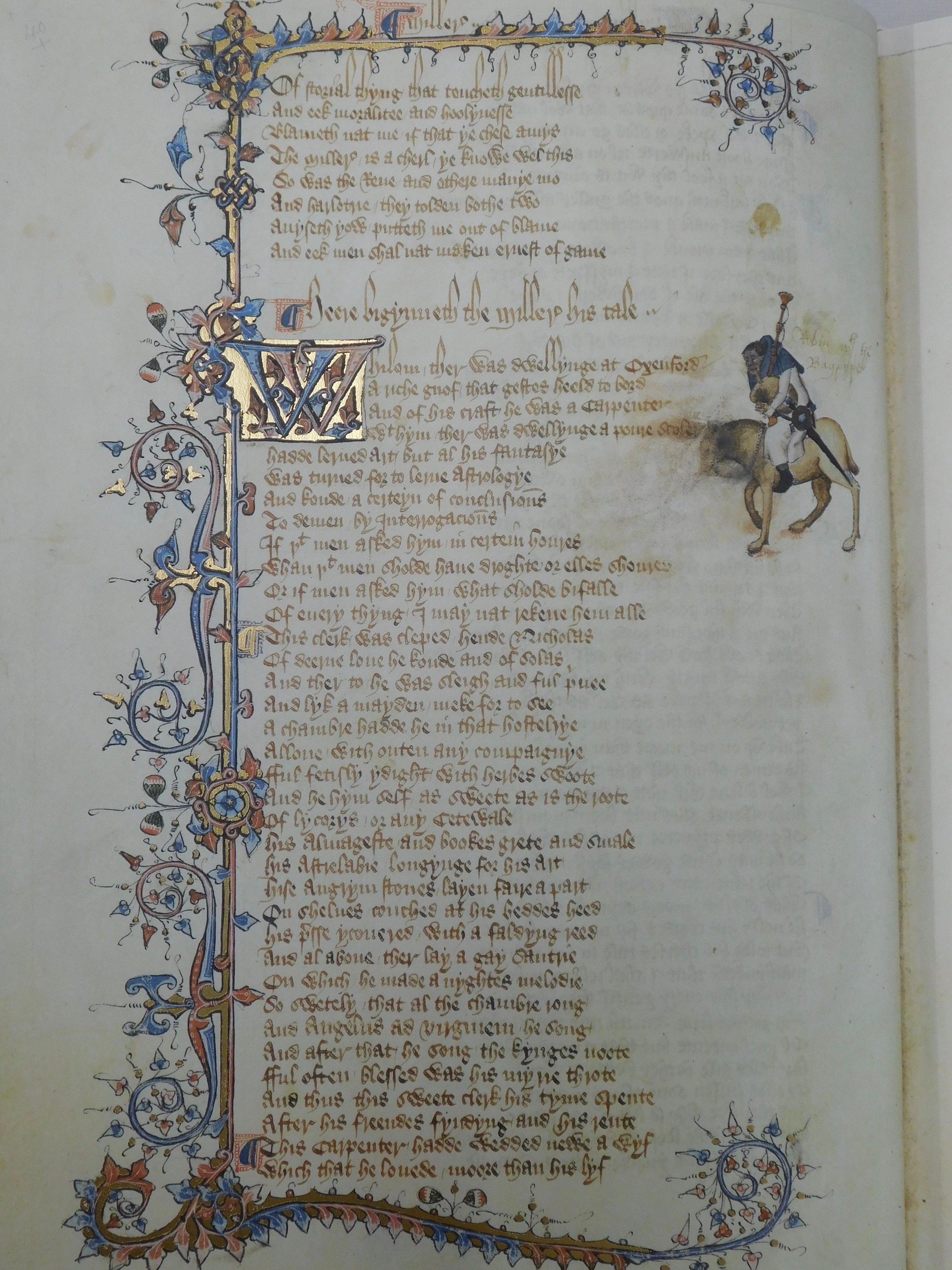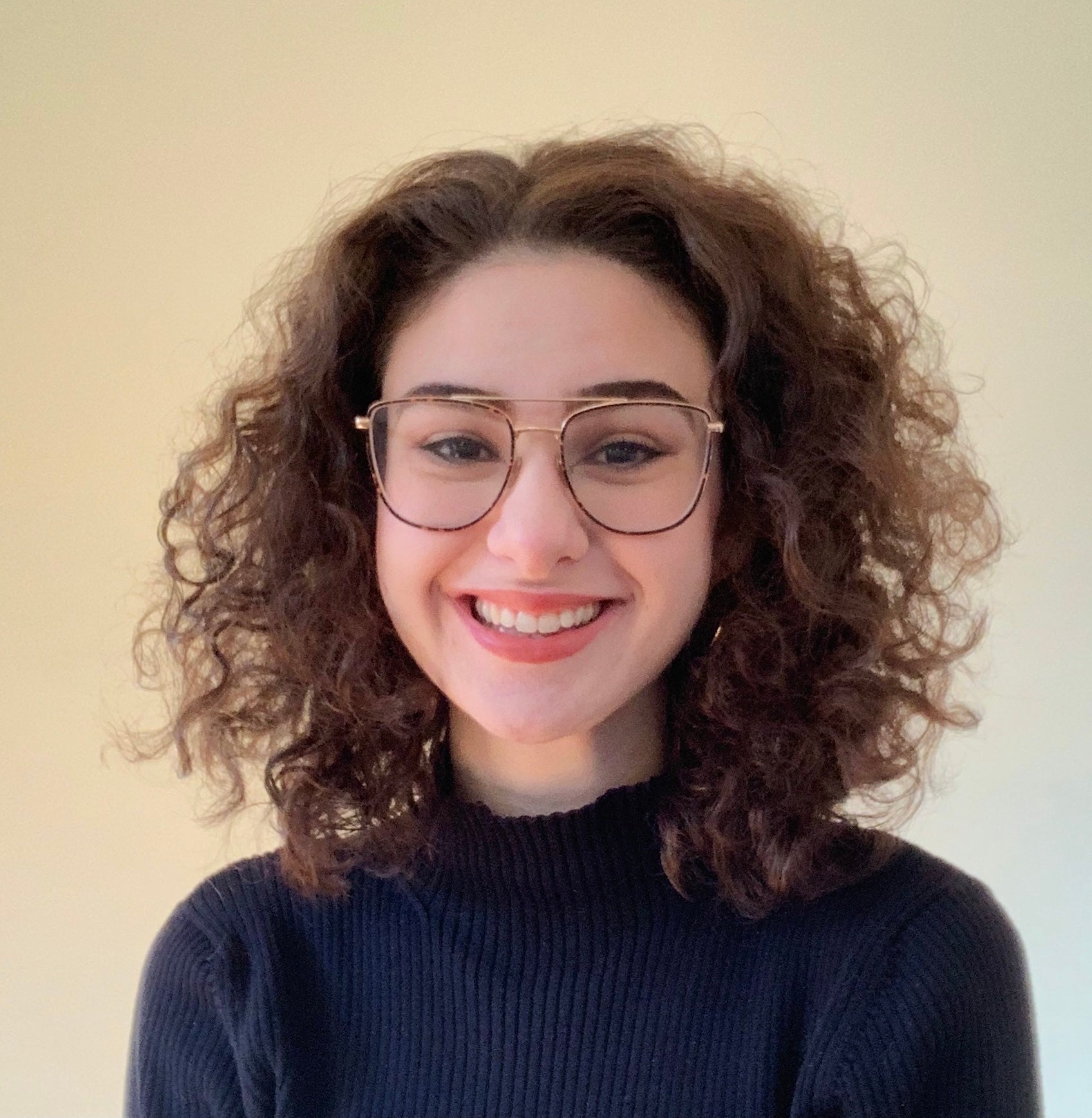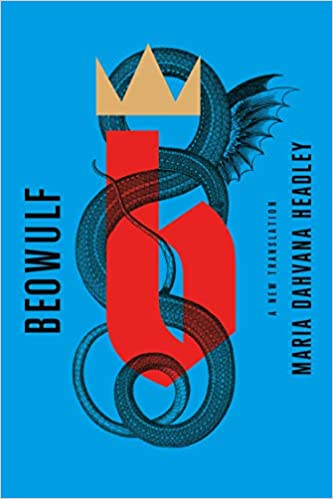What do you think of when you hear the term “medieval”? Do you think of the Dark Ages? Do you think of witchcraft and knights riding horses? Do you think of Chaucer? What about those old and haunted cathedrals with their  stained-glass windows? Perhaps you think about the language and what funny accents and vocabulary they had back then. Whatever it is you think of, medieval studies is alive and well in the modern day. Every writer, architect, linguist—you name it—has drawn some inspiration from medieval studies.
stained-glass windows? Perhaps you think about the language and what funny accents and vocabulary they had back then. Whatever it is you think of, medieval studies is alive and well in the modern day. Every writer, architect, linguist—you name it—has drawn some inspiration from medieval studies.
The Canterbury Tales by Geoffrey Chaucer
The most famous “classic” title of medieval literature is Chaucer’s The Canterbury Tales. Written in Middle English, Chaucer tells 24 stories about a large group of pilgrims who take a trip across England, partaking in a storytelling contest to pass the time. Pitt English Associate Professor Ryan McDermott teaches medieval literature, including a class that’s all about Chaucer. Since there was no printing press at the time when Chaucer’s magnum opus was created, literature circulated differently. Stories from the original written cycle—like the myriad sources for many of the tales—were primarily read aloud. Reading aloud in community brought Chaucer’s manuscript to life.
Madeline Fox, a 2021 Marshall Scholarship winner and recent graduate of the University of Pittsburgh, found herself sitting in this class about Chaucer. She triple-majored in English Literature, Philosophy, and Classics. Before she knew it, she realized that studying Medieval literature was relevant for so many reasons: understanding the inspiration behind later literatures, finding antiquity, and understanding the evolution of languages. Fox followed a tale from Chaucer, “The Tale of Melibee.” It is one of only two tales in Canterbury that are in prose; the rest of the cycle is written in verse. By following just one of the tales and studying its language, form, and classical and more recent sources, Fox was fully immersed in this late medieval story cycle, learning to understand the whys and hows of the text.
Fox even continued and dove deeper into the tale while writing her BPhil thesis through the Honors College, Optical Theory and Feminine Auctoritas Within Chaucer's “The Tale of Melibee” with an English Translation of Albertanus of Brescia's Liber Consolationis et Consilii in Full. Brilliantly putting all three of her majors to use for this project, she translated the tale’s base text, Albertanus of Brescia’s The Book of Consolation and Counsel from Latin into English for the first time. Merely into the first chapter, she found a discrepancy between Chaucer’s Middle English tale and Albertanus’ original Latin that led her into a spiral of discovery about medieval optical theory, the symbolism of the eyes and morality, and the representation of women that all connected. Fox’s thesis, or at least her new English translation of The Book of Consolation and Counsel, went on to be 51 chapters, which was an appendix to the analytical portion of her thesis.
As Fox’s example shows, medieval studies covers a whole spectrum of other genres of studies to create a wide lens through which history can be viewed and studied. There are so many outlets for research, and once you find something—like the line in “The Tale of Melibee” that prompted Fox to research both its base text and medieval optical theory, leading into topics of morality and gender studies—it changes your perspective of everything about the text at hand. Fox is currently pursuing a Masters of Arts in Medieval Literatures and Languages at the University of York in the U.K.
Medieval Manuscripts and Monuments
But there is also a whole culture surrounding manuscripts, which McDermott dives into in his course The Invention of English Literature. In this class, which is his favorite one to teach, McDermott gives students insight on how to read and write manuscripts. Choose a scribe and learn their ways. Medieval culture is living and breathing among us; in Hillman Library, the special collections hold a facsimile—an exact copy—of a pre-1027 Chartres manuscript bought in 2001, now worth over $100,000.
This is one example of how objects from the Middle Ages aren’t just a time capsule. When you pick up the book and read it, you aren’t just being transported back into that time period. The book has been living and breathing in the world as the people and culture change around it. As new meanings are discovered, the importance of a text proliferates.
Emilee Ruhland, a PhD student at Pitt, took a seminar through the European Studies Center at Pitt on the 2019 fire that severely damaged the Notre Dame Cathedral in Paris; the seminar focused on this same idea of antiquity and its ability to stay with us in the present. Ruhland sees such buildings as time travelers: There has been much talk about the “before” versus “after” nature of the cathedral, particularly since French President Emmanuel Macron wanted to use new blueprints to rebuild it into something that is part of the living world today. Ruhland also went to England to study how cathedrals have been preserved and used. Manchester was clearly used every day with no ornateness. The cathedral in Worcester clearly used the space daily as well, but it also had an underground tour that felt like a journey to the past, carefully preserved from medieval times. And York’s decadently showed off the past, holding tours and formal masses.
The cathedrals that Ruhland visited are not just time capsules or historical buildings, because they weren’t built to stay in the past. They are here to be enjoyed and understood as long as they stand.

Passing on the Torch
Beowulf was written in Old English and has ever since been studied and translated in many ways and forms. Translating a language from its old form to its modern form is important and stylistic; you get to make some fun choices while doing it. However, it is important to think about the evolution of a text. Who gets to pass it on? Who controls it? Who gets to study it? As medieval studies connects to many other areas of study, critical lenses such as feminism and paleography can also be taken into account when thinking about these questions.
Every writer today has been influenced by medieval literature, either directly or indirectly. Medieval literature shaped many current-day genres, such as romance, which follows a hero on a quest. Romance branches to fantasy, science fiction, young adult, and more. Just by studying Chaucer’s Canterbury Tales, we ask the question: What is the meaning of life’s journey? Though the tales were written almost 700 years ago, they still prompt us to think in a modern sense.
Now what do you think of when you hear the term “medieval”? It’s not just a term about the past; medieval artifacts and themes are living in the present day alongside us. Notice everything around you; read literature through different lenses, be reminded of medieval architecture from some of the buildings around Pittsburgh—including, of course, the Gothic style of our very own Cathedral of Learning—or think about the meaning of your journey through life. Wherever you go or whatever you study, the themes of medieval literature live among us.
Sources worth checking out to immerse yourself in all things medieval
● The Devil’s Historians: How Modern Extremists Abuse the Medieval Past by Amy S. Kaufman and Paul B. Sturtevant (University of Toronto Press, 2020): This book highlights the troubling yet beautiful aspects of the medieval past. It’s enlightening in that the more unsettling themes addressed, such as Islamophobia and antisemitism, aren’t just brushed under the rug; we are continuing to challenge certain thoughts, behaviors, and events that flourished in the Western middle ages.
● Madeline Fox’s BPhil thesis, University of Pittsburgh, 2021.
● Visit the Hillman Library on University of Pittsburgh’s campus to check out a manuscript of Chaucer’s Canterbury Tales.
● Look through Pitt’s course catalogue to explore medieval studies. Medieval literature is offered every semester on a regular schedule!
● A feminist Beowulf translation by Maria Dahvana Headley (FSG, 2020).
● The European Studies Center at Pitt holds events, both live and remote, that focus on medieval studies!
● Pitt History department Lecturer Elizabeth Archibald writes the Ask the Past blog, giving witty advice from old books.
—Olivia Wyland
Olivia Wyland is a senior majoring in Public and Professional Writing with minors in History and Writing (Nonfiction).
